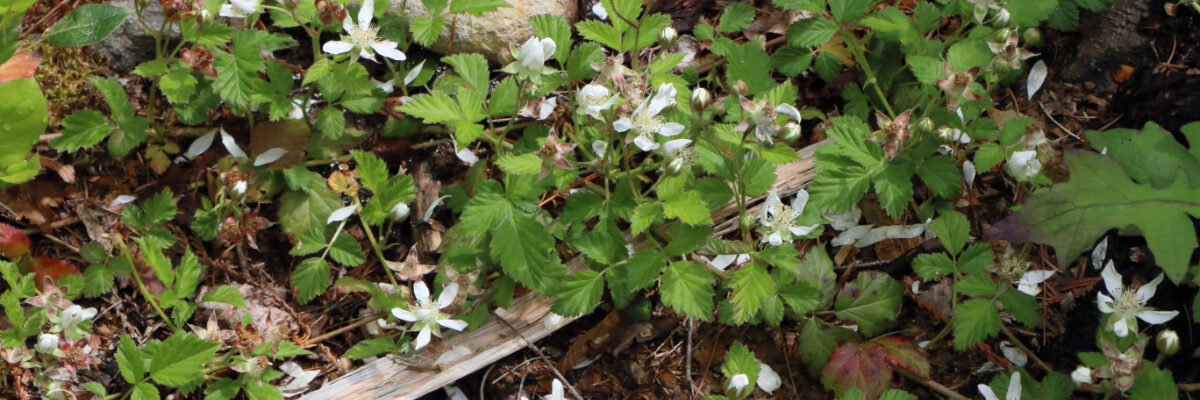One day this May I was standing in a patch no bigger than six square metres of our native trailing blackberry. I had started out looking for bees and then began to realize how many different insects were foraging, mating, or resting there. To learn more, I visited the patch for no more than an hour on four afternoons, finding 24 species in that space. Here’s a list of some of the insects I photographed. For some species there were many individuals.
- five species of bumble bee,
- a honey bee,
- our most common species of mason bee,
- five different mining bees, one as small as 5 mm overall, and none of which I could identify to species,
- a nomad bee, which preys on mining bees,
- three sweat bees, two of which I could identify to species,
- three early species of flower flies,
- a stilt bug,
- two species of stink bug,
- a flower longhorn beetle,
- an early wasp, and
- a butterfly.
Insects are important to us all because they play a central role in the food chain. They help produce much of our food and also are food for birds and other animals. They help break down dead plants and animals into materials that will support new life. The bad news is that insects are vulnerable to habitat loss and populations are decreasing, so we need to act to conserve their diversity.
What can do you to help? Plant native species. Leave some areas of soil bare and undisturbed for ground nesters. Tell the municipality that you favour leaving shoulders, ditches and dikes un-mowed and undisturbed. Limit your use of pesticides. Tolerate some insect damage in your garden. Keep leaf litter on the ground in your garden rather than using commercially-produced mulch. Don’t kill insects unless they pose a hazard.
Everything you do to help insects will also help birds and other kinds of life, including us!
Gwen, an interested amateur
Photo above taken in the small patch of trailing blackberry, on a friend’s property in Brackendale.















